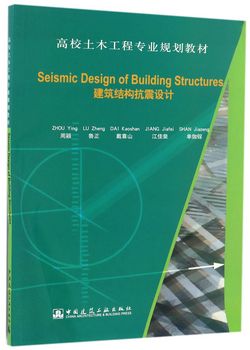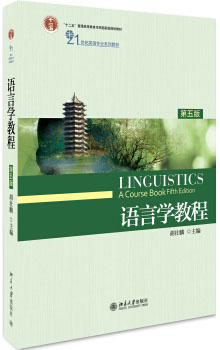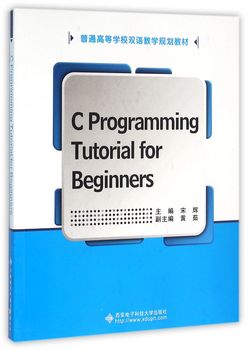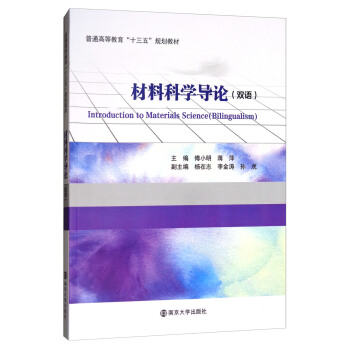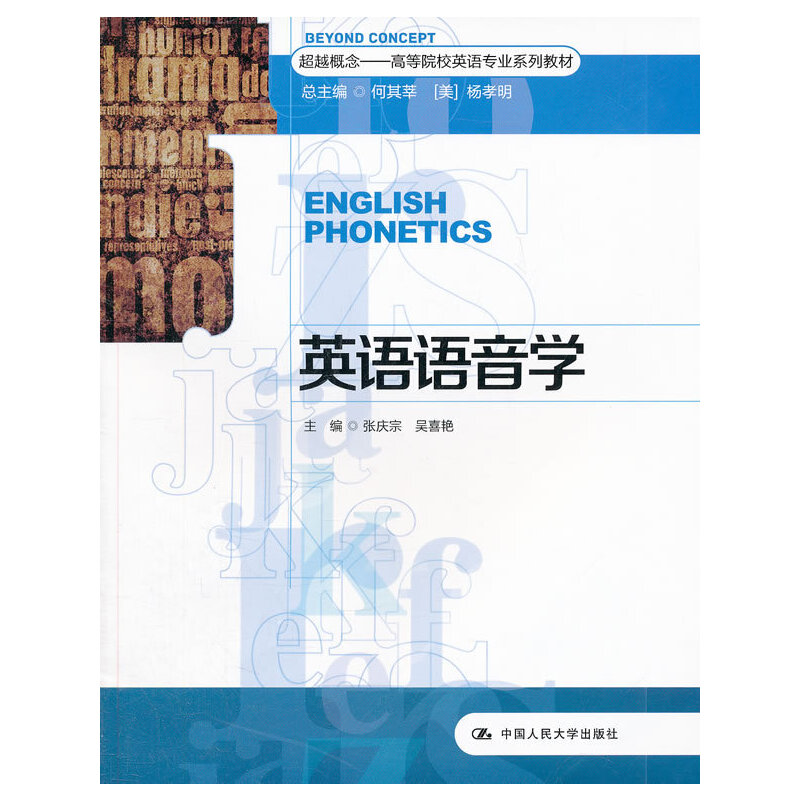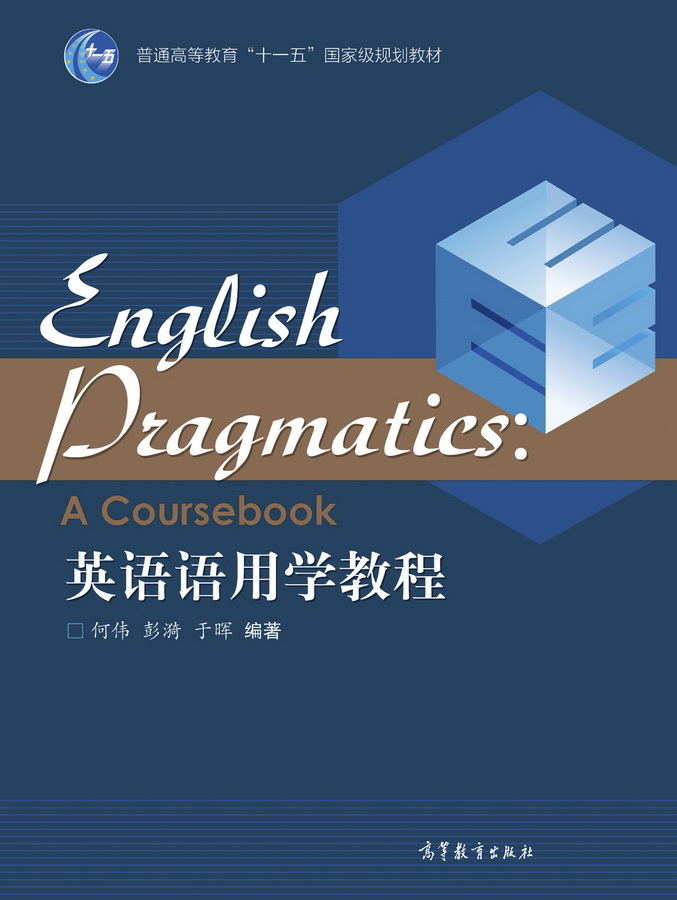英语词汇学教程(第四版) / 外语语言文学系列教材
定价:¥39.50
作者: 张维友
出版时间:2022-01
最新印次日期:2025-7
出版社:华中师范大学出版社
“十二五”普通高等教育本科国家级规划教材
- 华中师范大学出版社
- 9787562296386
- 4-5
- 430253
- 42269713-6
- 16开
- 2022-01
- 文学
- 外国语言文学类
- 英语
- 本科
内容简介
《英语词汇学教程》是笔者在多年的教学实践基础上整理而成的。本书在保留词汇学传统的知识结构基础上,尽可能融进本学科新的研究成果,着力反映词汇的新发展,并首次引进了篇章词汇语义学的内容。本书的着眼点在于实用,因此,理论上阐述深入浅出,删繁就简,同时博采例证,提供丰富的素材。该书配备了相当数量的练习题和思考题,以便巩固学习内容,让学生学以致用。
目录
Chapter 1 Basic Concepts of Words and Vocabulary
1.1 The Definition of a Word
1.2 Vocabulary
1.3 Sound and Meaning
1.4 Sound and Form
1.5 Classification of Words
1.5.1 Basic Vocabulary and Non-basic Vocabulary
1.5.2 Content Words and Functional Words
1.5.3 Native Words and Borrowed Words
Chapter 2 The Development of the English Vocabulary
2.1 The Indo-European Language Family
2.2 Three Phases of the Vocabulary Development
2.2.1 Old English (450-1150)
2.2.2 Middle English (1150-1500)
2.2.3 Modern English (1500 up to the present)
2.3 General Characteristics
2.3.1 Receptivity, Adaptability and Heterogeneity
2.3.2 Simplicity of Inflection
2.3.3 Relatively Fixed Word Order
2.4 Foreign Elements in the English Vocabulary
2.4.1 Major Foreign Elements
2.4.2 Minor Foreign Elements
2.5 Growth of Contemporary English Vocabulary
2.6 Modes of Vocabulary Development
2.6.1 Creation
2.6.2 Semantic Change
2.6.3 Borrowing
Chapter 3 Morphological Structure of English Words
3.1 Morphemes
3.2 Morphs and Allomorphs
3.3 Classifying Morphemes
3.3.1 Free and Bound Morphemes
3.3.2 Derivational and Inflectional Morphemes
3.3 . 3 Content and Grammatical Morphemes
3.4 Identifying Morphemes
3.5 Morphemization and New Morphemes
3.6 Morpheme and Word Formation
3.6.1 Affix
3.6.2 Root, Stem, Base
Chapter 4 Word Formation
4.1 Affixation
4.1.1 Prefixation
4.1.2 Suffixation
4.2 Compounding
4.2.1 Characteristics of Compounds
4.2.2 Formation of Compounds
4.3 Conversion
4.3.1 Conversion to Nouns
4.3.2 Conversion to Verbs
4.3.3 Conversion to Adjectives
4.3.4 Changes Involved in Conversion
4.4 Blending
4.5 Clipping
4.6 Acronymy
4.6.1 Initialisms (alphabetisms)
4.6.2 Acronyms
4.7 Back-formation
4.8 Sound Reduplication
4.9 Commonization of Proper Names
4.9.1 Words from Proper Names
4.9.2 Morphological Processing
4.9.3 Use of Commonized Words
Chapter 5 Word Meaning and Componential Analysis
5.1 Word Meaning
5.1.1 Reference
5.1.2 Concept
5.1.3 Sense
5.2 Motivation
5.2.1 Onomatopoeic Motivation
5.2.2 Morphological Motivation
5.2.3 Semantic Motivation
5.2.4 Etymological Motivation
5.3 Types of Meaning
5.3.1 Grammatical Meaning
5.3.2 Lexical Meaning
5.4 Componential Analysis
Chapter 6 Sense Relations
6.1 Polysemy
6.1.1 Two Approaches to Polysemy
6.1.2 Two Processes of Development
6.2 Homonymy
6.2.1 Types of Homonyms
6.2.2 Origins of Homonyms
6.2.3 Differentiation of Homonyms from Polysemants
6.2.4 Rhetoric Features of Homonyms
6.3 Synonymy
6.3.1 Definition of Synonyms
6.3.2 Types of Synonyms
6.3.3 Sources of Synonyms
6.3.4 Discrimination of Synonyms
6.4 Antonymy
6.4.1 Three Types of Antonyms
6.4.2 Characteristics of Antonyms
6.4.3 The Use of Antonyms
6.5 Hyponymy
6.6 Semantic Field
Chapter 7 Changes in Word Meaning
7.1 Types of Change
7.1.1 Extension of Meaning
7.1.2 Narrowing of Meaning
7.1.3 Elevation of Meaning
7.1.4 Degradation of Meaning
7.1.5 Transfer of Meaning
7.2 Mechanism of Change
7.3 Causes of Change
7.3.1 Extra-linguistic Factors
7.3.2 Linguistic Factors
Chapter 8 Meaning and Context
8.1 Types of Context
8.1.1 Extra-linguistic Context
8.1.2 Linguistic Context
8.2 The Role of Context
8.2.1 Elimination of Ambiguity
8.2.2 Indication of Referents
8.2.3 Provision of Clues for Inferring Word Meaning
Chapter 9 English Idioms
9.1 Characteristics of Idioms
9.1.1 Semantic Unity
9.1.2 Structural Stability
9.1.3 Idiomaticity
9.2 Classification of Idioms
9.2.1 Noun Idioms
9.2.2 Adjective Idioms
9.2.3 Verb Idioms
9.2.4 Adverb Idioms
9.2.5 Sentence Idioms
9.3 Use of Idioms
9.3.1 Stylistic Features
9.3.2 Rhetorical Features
9.4 Variations of Idioms
9.4.1 Replacement
9.4.2 Addition or Deletion
9.4.3 Position Shift
9.4.4 Shortening
9.4.5 Dismantlement
Chapter 10 English Dictionaries
10.1 Types of Dictionaries
10.1.1 Linguistic Dictionaries
10.1.2 Encyclopedic Dictionaries
10.1.3 Specialized Dictionaries
10.2 Choice of Dictionaries
10.2.1 Monolingual or Bilingual Dictionaries
10.2.2 General or Specialized Dictionaries
10.2.3 British or American Dictionaries
10.2.4 Early or Later Versions
10.3 Intelligent Use of the Dictionary
10.3.1 Spelling
10.3.2 Pronunciation
10.3.3 Definition
10.3.4 Usage Labels
10.3.5 Grammar Information
10.3.6 Usage Notes and Language Notes
10.3.7 Etymological Information
10.3.8 Picture Illustration
10.3.9 Supplementary Matter
10.4 Chinese Learner-Friendly Dictionaries
10.4.1 Oxford Advanced Learner's English-Chinese Dictionary,6th Edition 2000 《牛津高阶英汉双解词典》(OALD)
10.4.2 Longman Dictionary of Contemporary English, 5th Edition 2014《朗文当代高级英语辞典》(LDCE)
10.4.3 Collins COBUILD Advanced Dictionary of English-English/Chinese 2009 《柯林斯COBUILD高级英汉双解词典》(CCADE)
10.5 E-Dictionaries
10.5.1 Software Dictionaries
10.5.2 Website Dictionaries
10.5.3 Smartphone Dictionaries
Chapter 11 Vocabulary Learning
11.1 Vocabulary Storage
11.2 Schematic Learning
11.3 Learning by Lexical Chunks
11.4 Learning Words in Discourse
11.4.1 Cohesion
11.4.2 Discourse Markers and Organizers
11.5 Learning Words with Corpus
11.5.1 Corpus and Search Tools
11.5.2 AntConc
11.5.3 The British National Corpus (BNC)
11.5.4 The Corpus of Contemporary American English (COCA)
11.5.5 Other English Corpora and Websites
REFERENCES
英汉对照词汇学术语
1.1 The Definition of a Word
1.2 Vocabulary
1.3 Sound and Meaning
1.4 Sound and Form
1.5 Classification of Words
1.5.1 Basic Vocabulary and Non-basic Vocabulary
1.5.2 Content Words and Functional Words
1.5.3 Native Words and Borrowed Words
Chapter 2 The Development of the English Vocabulary
2.1 The Indo-European Language Family
2.2 Three Phases of the Vocabulary Development
2.2.1 Old English (450-1150)
2.2.2 Middle English (1150-1500)
2.2.3 Modern English (1500 up to the present)
2.3 General Characteristics
2.3.1 Receptivity, Adaptability and Heterogeneity
2.3.2 Simplicity of Inflection
2.3.3 Relatively Fixed Word Order
2.4 Foreign Elements in the English Vocabulary
2.4.1 Major Foreign Elements
2.4.2 Minor Foreign Elements
2.5 Growth of Contemporary English Vocabulary
2.6 Modes of Vocabulary Development
2.6.1 Creation
2.6.2 Semantic Change
2.6.3 Borrowing
Chapter 3 Morphological Structure of English Words
3.1 Morphemes
3.2 Morphs and Allomorphs
3.3 Classifying Morphemes
3.3.1 Free and Bound Morphemes
3.3.2 Derivational and Inflectional Morphemes
3.3 . 3 Content and Grammatical Morphemes
3.4 Identifying Morphemes
3.5 Morphemization and New Morphemes
3.6 Morpheme and Word Formation
3.6.1 Affix
3.6.2 Root, Stem, Base
Chapter 4 Word Formation
4.1 Affixation
4.1.1 Prefixation
4.1.2 Suffixation
4.2 Compounding
4.2.1 Characteristics of Compounds
4.2.2 Formation of Compounds
4.3 Conversion
4.3.1 Conversion to Nouns
4.3.2 Conversion to Verbs
4.3.3 Conversion to Adjectives
4.3.4 Changes Involved in Conversion
4.4 Blending
4.5 Clipping
4.6 Acronymy
4.6.1 Initialisms (alphabetisms)
4.6.2 Acronyms
4.7 Back-formation
4.8 Sound Reduplication
4.9 Commonization of Proper Names
4.9.1 Words from Proper Names
4.9.2 Morphological Processing
4.9.3 Use of Commonized Words
Chapter 5 Word Meaning and Componential Analysis
5.1 Word Meaning
5.1.1 Reference
5.1.2 Concept
5.1.3 Sense
5.2 Motivation
5.2.1 Onomatopoeic Motivation
5.2.2 Morphological Motivation
5.2.3 Semantic Motivation
5.2.4 Etymological Motivation
5.3 Types of Meaning
5.3.1 Grammatical Meaning
5.3.2 Lexical Meaning
5.4 Componential Analysis
Chapter 6 Sense Relations
6.1 Polysemy
6.1.1 Two Approaches to Polysemy
6.1.2 Two Processes of Development
6.2 Homonymy
6.2.1 Types of Homonyms
6.2.2 Origins of Homonyms
6.2.3 Differentiation of Homonyms from Polysemants
6.2.4 Rhetoric Features of Homonyms
6.3 Synonymy
6.3.1 Definition of Synonyms
6.3.2 Types of Synonyms
6.3.3 Sources of Synonyms
6.3.4 Discrimination of Synonyms
6.4 Antonymy
6.4.1 Three Types of Antonyms
6.4.2 Characteristics of Antonyms
6.4.3 The Use of Antonyms
6.5 Hyponymy
6.6 Semantic Field
Chapter 7 Changes in Word Meaning
7.1 Types of Change
7.1.1 Extension of Meaning
7.1.2 Narrowing of Meaning
7.1.3 Elevation of Meaning
7.1.4 Degradation of Meaning
7.1.5 Transfer of Meaning
7.2 Mechanism of Change
7.3 Causes of Change
7.3.1 Extra-linguistic Factors
7.3.2 Linguistic Factors
Chapter 8 Meaning and Context
8.1 Types of Context
8.1.1 Extra-linguistic Context
8.1.2 Linguistic Context
8.2 The Role of Context
8.2.1 Elimination of Ambiguity
8.2.2 Indication of Referents
8.2.3 Provision of Clues for Inferring Word Meaning
Chapter 9 English Idioms
9.1 Characteristics of Idioms
9.1.1 Semantic Unity
9.1.2 Structural Stability
9.1.3 Idiomaticity
9.2 Classification of Idioms
9.2.1 Noun Idioms
9.2.2 Adjective Idioms
9.2.3 Verb Idioms
9.2.4 Adverb Idioms
9.2.5 Sentence Idioms
9.3 Use of Idioms
9.3.1 Stylistic Features
9.3.2 Rhetorical Features
9.4 Variations of Idioms
9.4.1 Replacement
9.4.2 Addition or Deletion
9.4.3 Position Shift
9.4.4 Shortening
9.4.5 Dismantlement
Chapter 10 English Dictionaries
10.1 Types of Dictionaries
10.1.1 Linguistic Dictionaries
10.1.2 Encyclopedic Dictionaries
10.1.3 Specialized Dictionaries
10.2 Choice of Dictionaries
10.2.1 Monolingual or Bilingual Dictionaries
10.2.2 General or Specialized Dictionaries
10.2.3 British or American Dictionaries
10.2.4 Early or Later Versions
10.3 Intelligent Use of the Dictionary
10.3.1 Spelling
10.3.2 Pronunciation
10.3.3 Definition
10.3.4 Usage Labels
10.3.5 Grammar Information
10.3.6 Usage Notes and Language Notes
10.3.7 Etymological Information
10.3.8 Picture Illustration
10.3.9 Supplementary Matter
10.4 Chinese Learner-Friendly Dictionaries
10.4.1 Oxford Advanced Learner's English-Chinese Dictionary,6th Edition 2000 《牛津高阶英汉双解词典》(OALD)
10.4.2 Longman Dictionary of Contemporary English, 5th Edition 2014《朗文当代高级英语辞典》(LDCE)
10.4.3 Collins COBUILD Advanced Dictionary of English-English/Chinese 2009 《柯林斯COBUILD高级英汉双解词典》(CCADE)
10.5 E-Dictionaries
10.5.1 Software Dictionaries
10.5.2 Website Dictionaries
10.5.3 Smartphone Dictionaries
Chapter 11 Vocabulary Learning
11.1 Vocabulary Storage
11.2 Schematic Learning
11.3 Learning by Lexical Chunks
11.4 Learning Words in Discourse
11.4.1 Cohesion
11.4.2 Discourse Markers and Organizers
11.5 Learning Words with Corpus
11.5.1 Corpus and Search Tools
11.5.2 AntConc
11.5.3 The British National Corpus (BNC)
11.5.4 The Corpus of Contemporary American English (COCA)
11.5.5 Other English Corpora and Websites
REFERENCES
英汉对照词汇学术语


